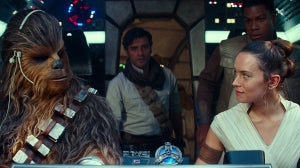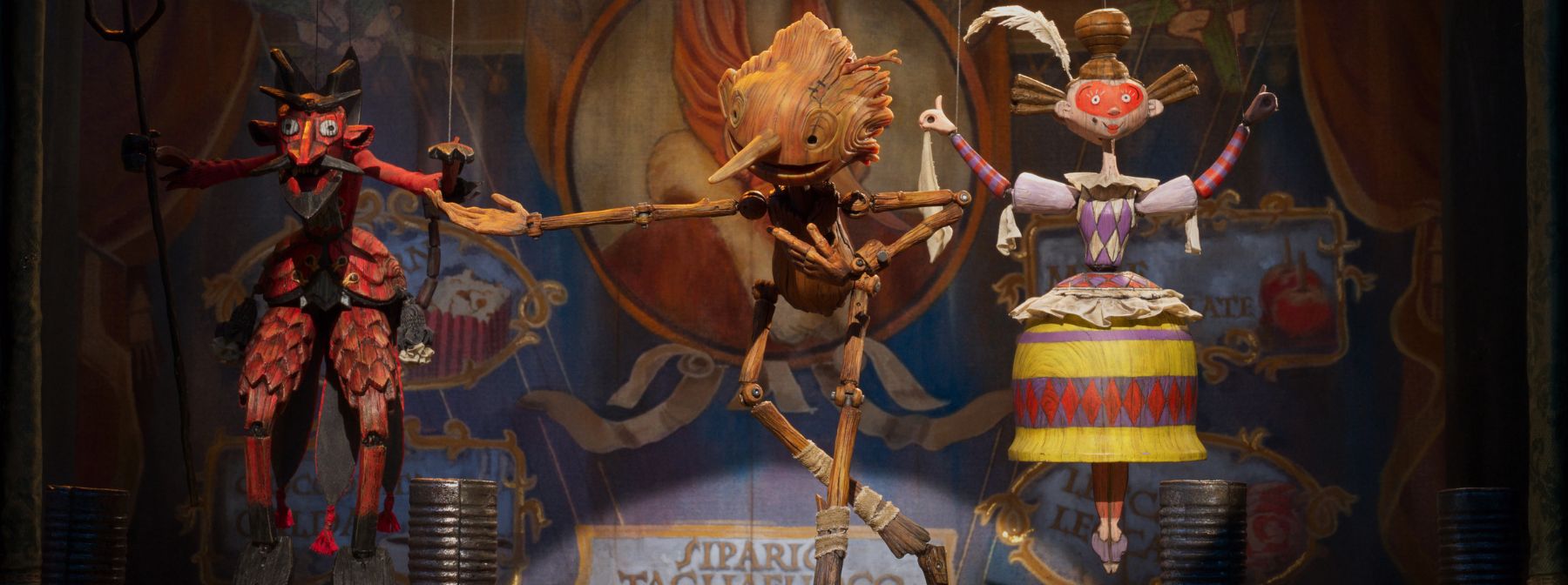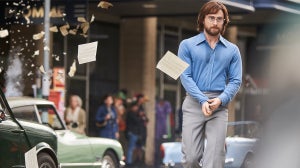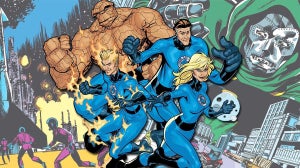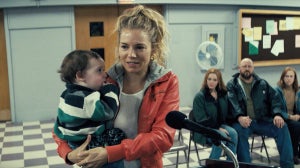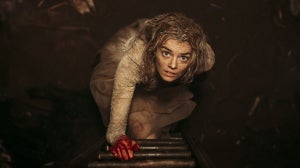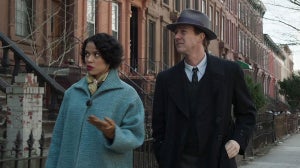
Carlo Collodi’s novel The Adventures Of Pinocchio has remained one of the most enduring fairy tales in popular culture since its original publication in 1883, largely thanks to the sixty-plus adaptations we’ve seen over the years.
These have ranged from the classic Walt Disney animation to several recent efforts such as a surreal take from Italian filmmaker Matteo Garrone, a critically panned live-action Disney remake, and a strange Russian animation that became meme fodder due to its bizarre English language dubbing.
In development since 2008, the definitive screen adaptation of Collodi’s fairy tale may have finally arrived courtesy of Guillermo del Toro, who has gifted us a haunting stop-motion adventure which relocates the story to the 1930s Italy under Mussolini's fascist rule.
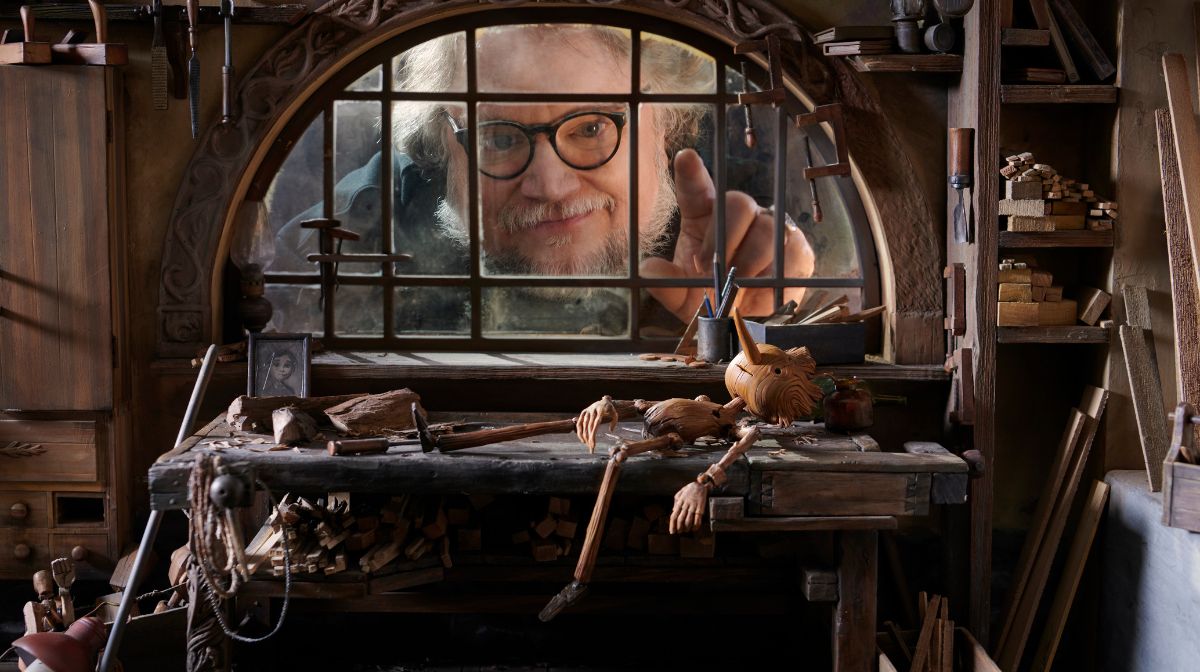
The filmmaker – who co-directed with Mark Gustafson - has described it as the third part of a trilogy which began with his Spanish Civil War pieces The Devil’s Backbone and Pan’s Labyrinth, exploring youthful disobedience to authoritarian regimes.
This was a subject he was keen to revisit, seeing the character of Pinocchio as a perfect vessel. As del Toro explained:
“There are ten characters in the history of fiction that are timeless because they are universal: they can be adapted into any new context and exist as powerful metaphors for anything from the human condition to issues in the worlds of finance.
https://www.youtube.com/watch?v=Od2NW1sfRdA
"Pinocchio is one of these, alongside the likes of Dracula, Frankenstein, and Sherlock Holmes - stories which the audience are innately aware of and can be used as a backdrop to explore many other things.
“The tale of Pinocchio has always been one about obedience - I wanted to tell a story about disobedience. Stop-motion animation was perfect for this, I couldn’t believe that nobody had tried to utilise the form for Pinocchio before.
"This is a story where Pinocchio is the only one who doesn’t conform and obey the rules, while the rest of the characters are quite literally obedient puppets – it’s a story that could only work in animation.”
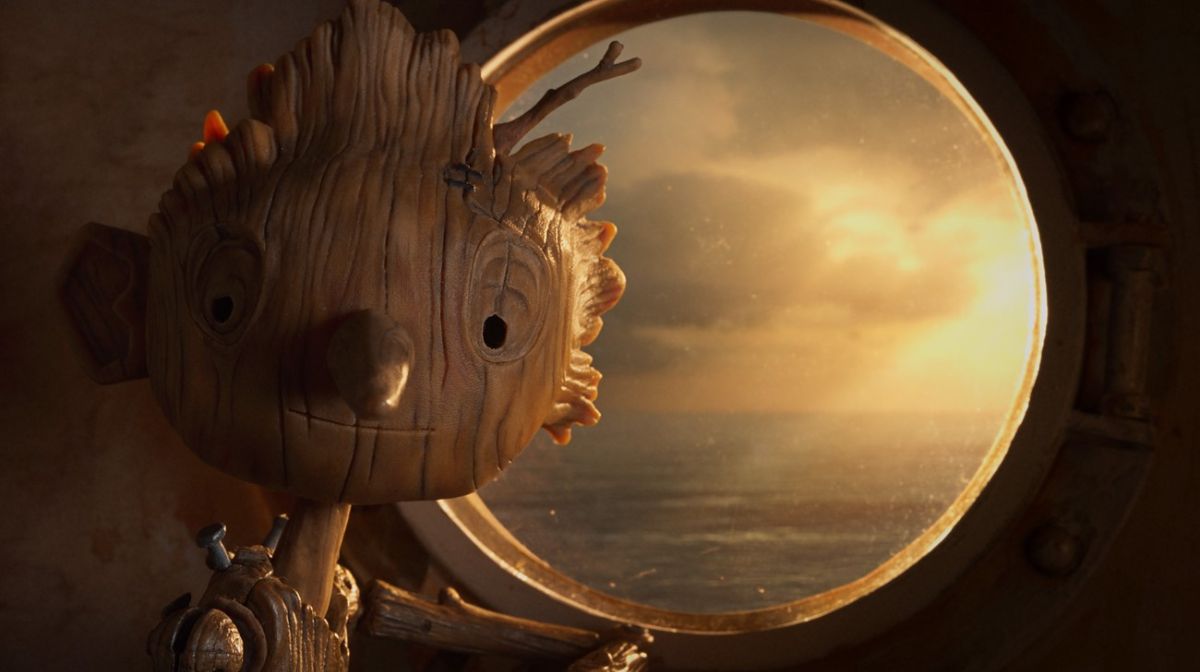
Although it’s been in development for nearly 15 years, it wasn’t until more recently that del Toro found his bold new perspective on the tale, following in the wake of his father’s death. He largely threw out earlier iterations of his screenplay (co-written with Over The Garden Wall creator Patrick McHale) to write a story focused on the surrogate parent-child relationship between Pinocchio and Geppetto, which blossomed into the most existential take on the material to date, as the story directly grapples with outliving your parents.
Tragically, the director’s mother passed away the day prior to the film’s London Film Festival world premiere. At the screening, his introductory speech ended with an emotional tribute: “My mother just passed away and this was very special for her and me. This is not only the first time you’ll see the movie, it’s the first time she’ll see the movie with us.”
Prior to Netflix picking up the project in 2018 after several years in development limbo, del Toro wasn’t officially on board the project as director. Those duties were initially shared between Gustafson and Gris Grimly, who had both been approached by the filmmaker and were immediately won over by his passion to put a new spin on this famous story.
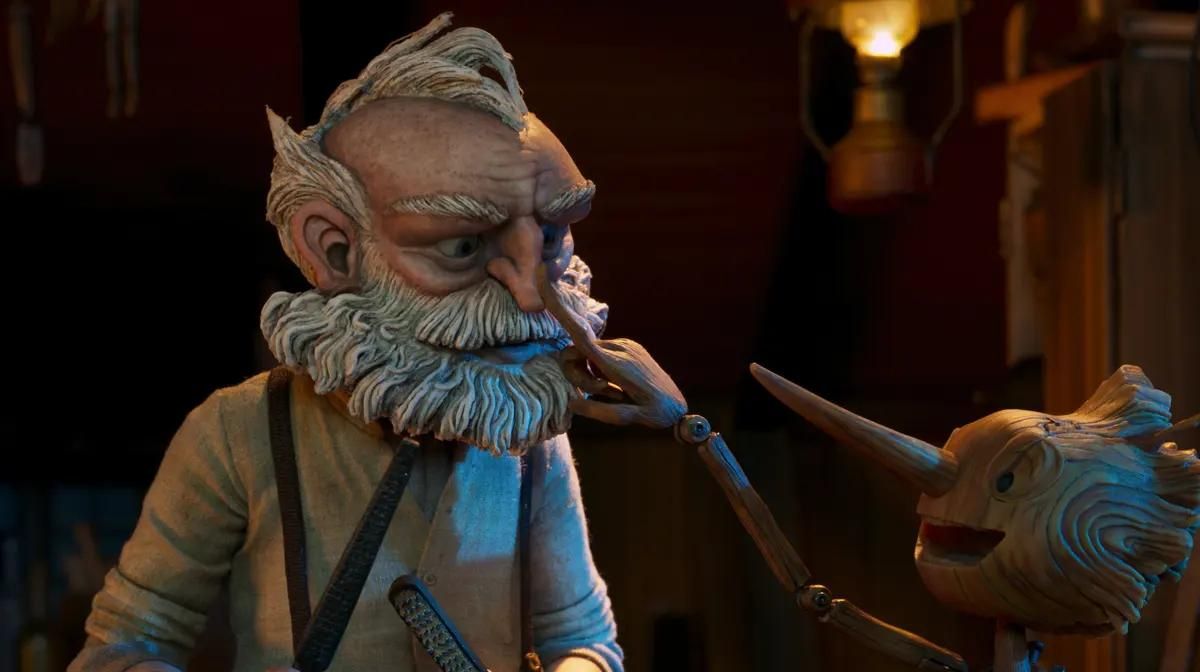
As Gustafson explained to Zavvi: “His love for and connection to the character is what initially swept us all up, but as time went on, it became apparent to everybody that he needed to be involved in a much bigger way – it was such a passion project for him. The way he introduced me to his take on the story when we first spoke was exciting: this wasn’t a story about a boy who becomes real by adhering to the rules, it was about questioning authority and highlighting the value of disobedience.
“This story has been told so many times, but there was now a reason to tell it again, as it had opened up in many ways. In the beginning, of course, it was hard not to think about the other versions of Pinocchio – but it became background noise, we all felt like we were telling a significantly different story.
"We never felt like we were remaking anything. I hadn’t even seen the Disney Pinocchio until much later in life, so I was driven largely by Guillermo’s passion for it.”
With this being a del Toro production, it’s more than a little horror inspired, with both directors drawing parallels between the fairy tale and Frankenstein, in some places directly referencing it (as they do with the “creation” sequence here).

“I think they’re very much the same story”, laughed Gustafson. “They’re both about creators who make something out of passion, it gets released into the world and then they must face the consequences! Of course, they’re coming from different places – Doctor Frankenstein is driven by his hubris and arrogance, while Geppetto is facing his own grief”.
In the time between the film’s initial conception and being picked up by Netflix, the characters around Pinocchio transformed alongside the story. One of the most noteworthy developments was the inclusion of Sebastian J. Cricket, voiced by Ewan McGregor, who Gustafson notes was a character who was “going to be eliminated in the first act”, only to find him becoming more integral to the story the further along they got.
“And when we brought Ewan in to record, that was another revelation altogether”, the director added. “He took what was on the page and brought it to a whole other level. The warmth and charm he has helps make something more complicated out of a character who is more straightforwardly pompous on the page.”

All the voice roles in the film – which also include Christoph Waltz as the monstrous Count Volpe, Tilda Swinton as a mystical wood sprite and Cate Blanchett as the monkey Spazzatura – were recorded prior to the start of production, so they could bring these characters to life in a way that fully honoured the voice performances.
“When you hear someone like David Bradley, who is just magnificent as Geppetto, the job for a director becomes a daily struggle of making sure we don’t screw it up! He’s done a magnificent job and given us absolute gold – we need to make sure we can get the best out of it”.
The starry cast is led by newcomer Gregory Mann, who voices the wooden boy at the film’s centre; a daunting task to voice one of the most famous characters in fiction, although much like Gustafson, Mann didn’t have the baggage of previous adaptations after being hired for the role.

“I actually wasn’t that familiar with the story!”, he explained to Zavvi. “This wasn’t something I grew up with, I just knew the Disney version as a film for young children. Guillermo explained this to me as something approaching a dark remake of that tale – and I instantly understood everything he said.
“It wasn’t a challenge to make it my own, the big challenge was that I recorded my part just as I was entering puberty. My voice was about to get deeper, which everybody was very aware of: we had to rush to get the filming of the script done in two months”. In many ways, the journey of making Pinocchio acted as a coming-of-age experience for the actor, as he turned 13 on the day of the film’s London premiere (naturally, the audience in attendance joined in with a rendition of Happy Birthday).
Much like the Disney animation, this take on Pinocchio features a plethora of original songs, all of which are co-written by del Toro himself, with the overriding darkness of this film compared to that adaptation making it feel like equal parts subversion and homage.
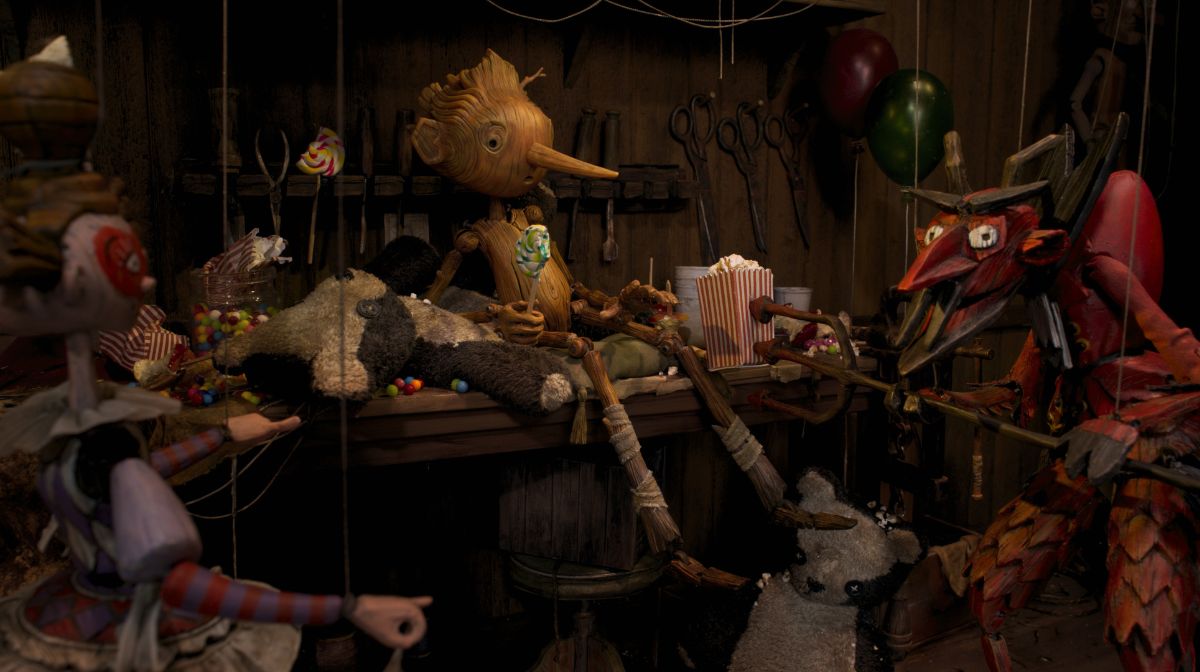
Mann described preparing the songs as the most challenging part of the film, explaining: “I’ve always loved singing, but here I had to train to get my voice to reach those high notes, which required a lot of work on my technique. Luckily, I’ve still managed to keep that to this day, which I’m happy about – although after doing 80 takes of one of the songs, it’s hard to forget it!
“I know this is a darker take on the story, but it does have a lot of humour that I think kids would find funny, as well as all these catchy songs. Even after working on them as much as I did, I’m still a big fan of them and will be putting them on my playlist at home – although, come to think of it, it will be weird to be listening back to my younger self singing”.
Once all the voice performances had been recorded, it was full steam ahead with the notoriously time-consuming process of bringing these stop-motion creations to life. The hardest of these took three whole months to get right: an elaborate tracking shot in which we’re introduced to Blankett’s monkey running through the town to meet Waltz’s menacing puppet master.

As Gustafson explains: “It’s a long shot that’s well over a minute long, involving a lot of characters and a very elaborate camera move. It was complicated in almost every way a stop motion shot can be! We had to remove parts of sets and shoot multiple passes as we couldn’t get some of the characters in there, and this was on top of all the tests we had to do beforehand to make sure the blocking and choreography was completely right. But it was such an important shot, the introduction of our villain, so it was worth the investment to give him the stage in an appropriate way.
“And then there were other tough scenes like the one in the church, which is hard because it’s such a big space, and getting the perspective of those characters right is difficult. But ultimately, that’s less important than the more intimate moments; if you don’t see Pinocchio and Geppetto thinking and feeling in their eyes, then it doesn’t matter how complicated the setup is. It’s all for nothing – it always must be about the characters above everything else.”
Gustafson describes Pinocchio as the “most satisfying” job of his career from a creative perspective and looks back fondly at the many years he spent working on it. Del Toro has a clause in his contract allowing him to take home any memorabilia from the set of his choosing, but Gustafson is coyer when talking about the mementos he picked up (“let’s just say, with thousands of sets and hundreds of characters created, there’s a lot nobody is going to miss”).
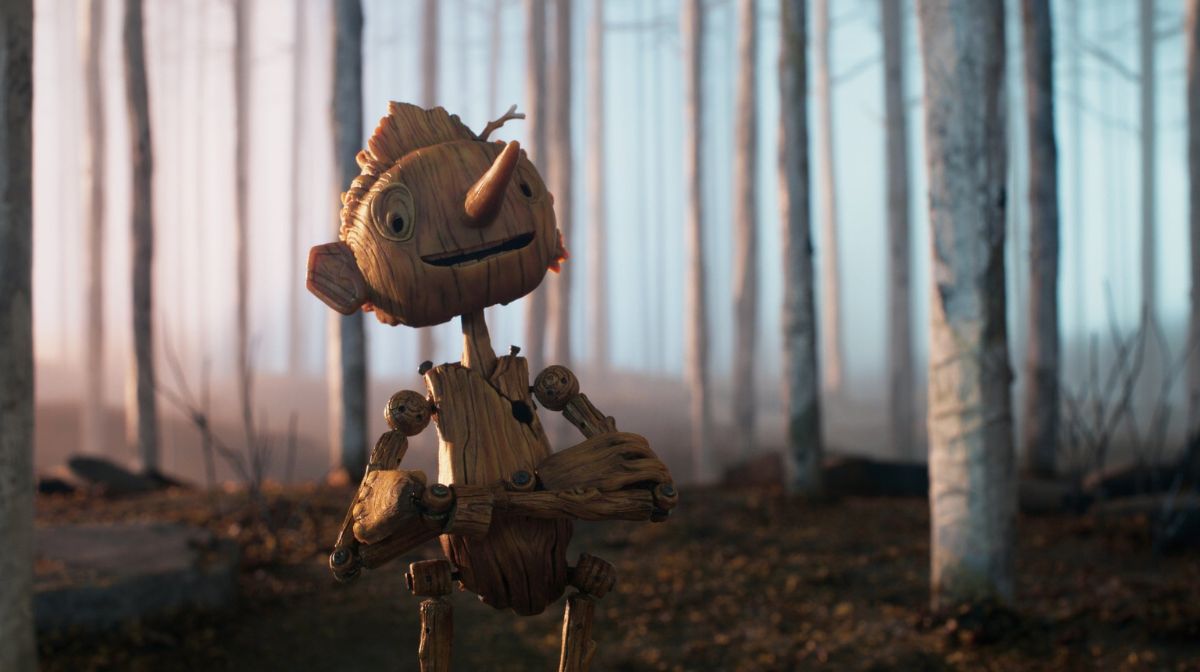
He may be sharing directorial duties, but del Toro’s decision to put his own name in the title isn’t due to it being defined by the same horror influences as his work throughout his career, nor was it motivated by ego. As he explained: “The reason the film is called Guillermo del Toro’s Pinocchio is because there are over 60 adaptations of this story, and you tend to think of them based on their creators due to how different they are.
"You start with Carlo Collodi’s Pinocchio, then you have Walt Disney’s Pinocchio, and then there’s Guillermo del Toro’s Pinocchio. And if the audience doesn’t like my version of this story? Well, then they have over 60 other versions they can choose from!”
Guillermo del Toro’s Pinocchio is streaming on Netflix from Friday 9th December.
For all things pop culture, follow us on Facebook, Instagram, Twitter, and TikTok.

Related Articles
